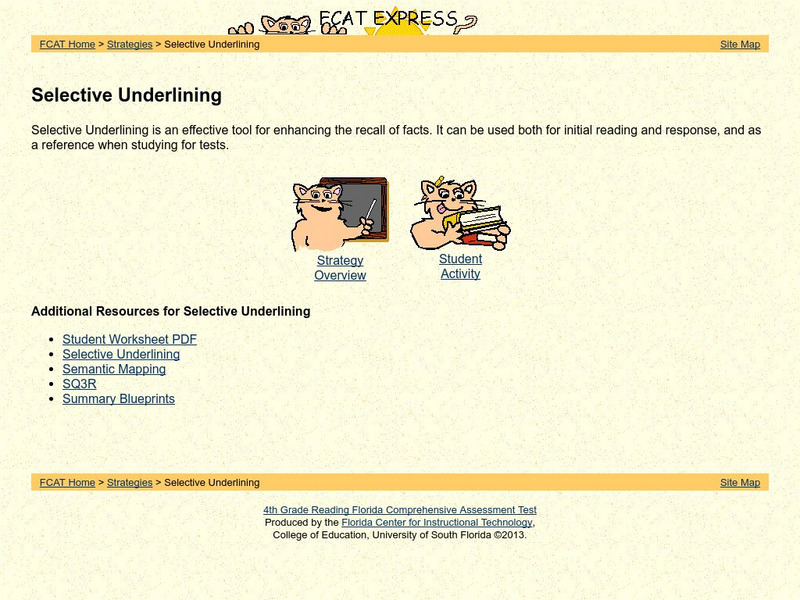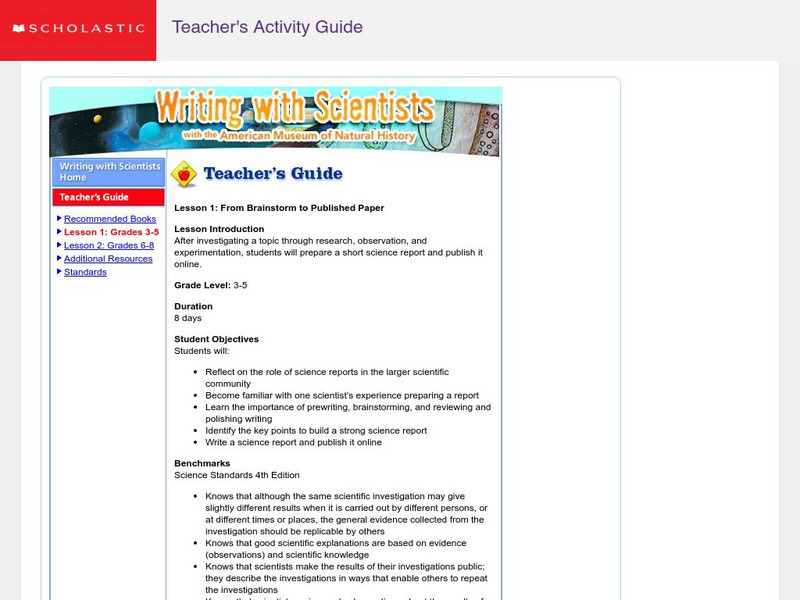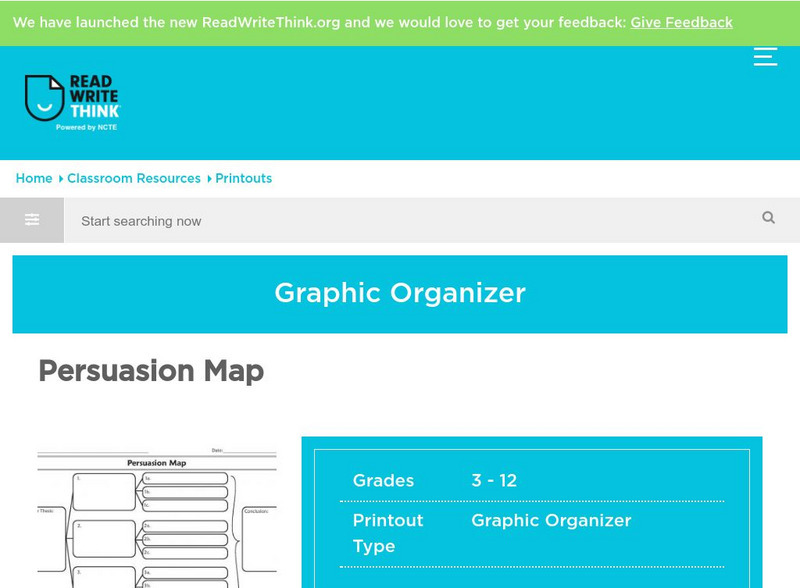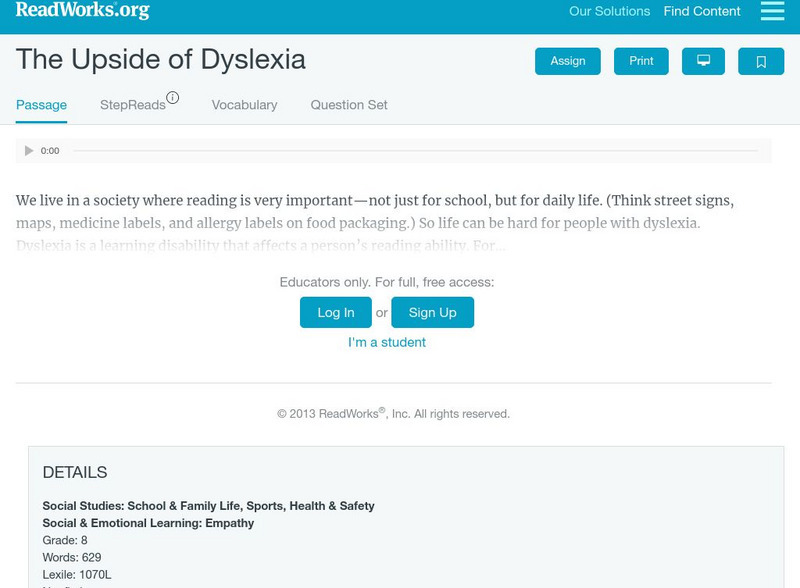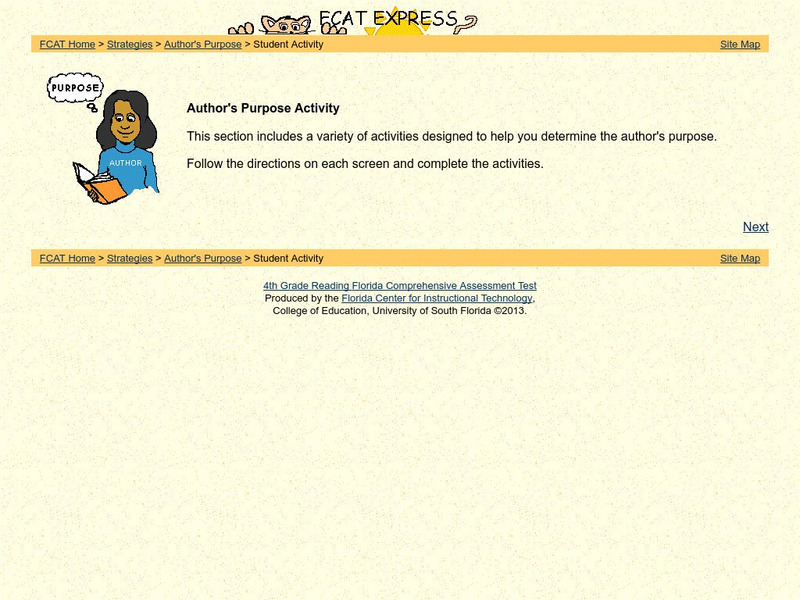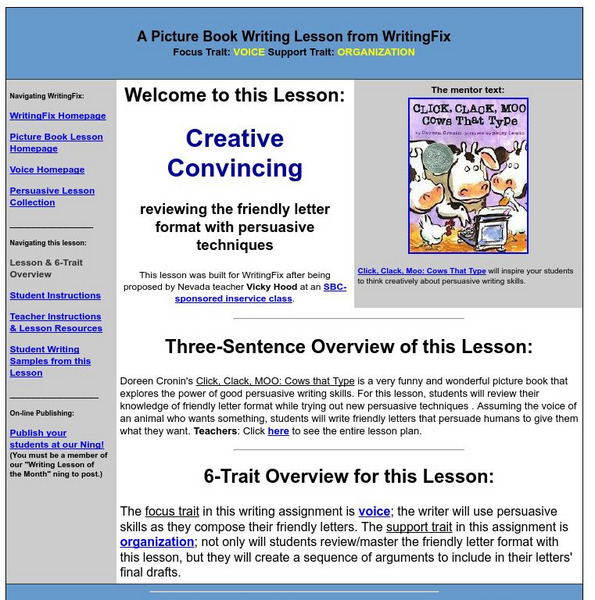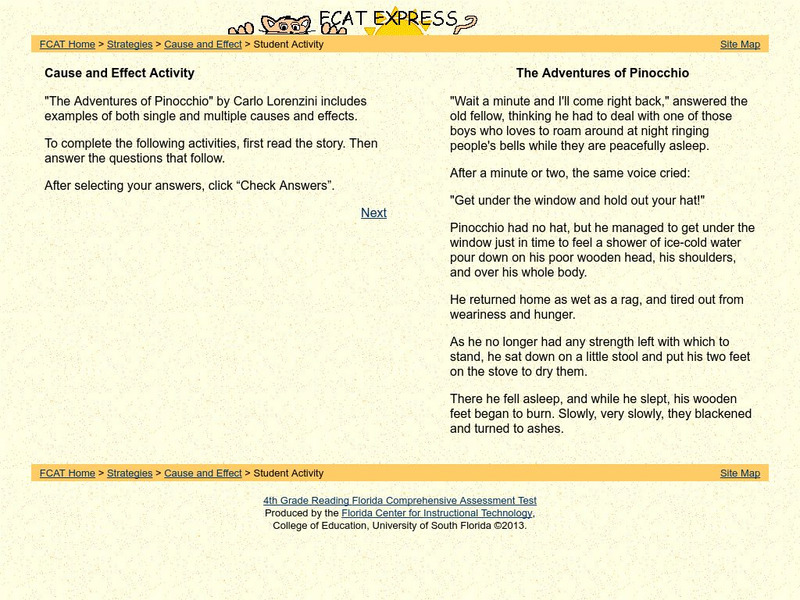University of South Florida
Fcat Express: Teaching Strategies (Reading) [Pdf]
Printable, fifty-five page PDF file of a staff development manual containing strategies for teaching reading. Includes chapters on vocabulary, main ideas and supporting details, author's purpose, chronological order, plot and conflict...
University of South Florida
Fcat Express: Semantic Feature Analysis
Site provides extensive assistance in preparing 4th grade students for Florida Comprehensive Assessment Test. This section on semantic features helps students recognize supporting details as they read.
University of South Florida
Fcat Express: Selective Underlining
Site provides extensive assistance in preparing 4th grade students for Florida Comprehensive Assessment Test. This section focuses on identifying main ideas and significant details by selectively underlining them in a text.
Scholastic
Scholastic: Writing With Scientists
After students investigate a topic through research, hypothesizing, observing, and experimentating, teachers can use this lesson to help their students prepare short science reports and publish them online. The Writing with Scientists...
University of South Florida
Fcat Express: Cause and Effect
Site provides extensive assistance in preparing 4th grade students for Florida Comprehensive Assessment Test. This section helps students identify cause and effect in literature.
ReadWriteThink
Read Write Think: Persuasion Map
A printable graphic organizer for students to use when writing on opinion or persuasive essay. Directions on how to use this type of graphic organizer as well as lists of teaching ideas, lesson plans, and other resources are also...
TeachEngineering
Teach Engineering: Pingus Penguins: Writing Good Instructions
Students use the free computer game Pingus to learn how engineers, specifically environmental engineers, use their technical writing skills to give instructions and follow the instructions of others. Students learn to write instructions...
Read Works
Read Works: Passages: The Upside of Dyslexia
[Free Registration/Login Required] Students read a nonfiction text about dyslexia and the difficulties and successes it brings and answer questions about comprehension, supporting details, vocabulary, transitions, and more. The text is...
Better Lesson
Better Lesson: Bats, Friend or Foe. An Argument Writing Activity
Students will state an argument with evidence, for or against, bats being removed from their environment by writing a letter to the editor and citing evidence for your claim.
University of South Florida
University of South Florida: Fcat Express: Author's Purpose Activity
Practice identifying author's purpose by recognizing the purpose in titles, understanding the difference between fact and opinion, and identifying the purpose of various forms of writing.
Writing Fix
Writing Fix: Purposeful Paragraphs on Memorable Teachers [Pdf]
How can we use questioning to create lead sentences and details in order to create a purposeful paragraph? This PDF lesson offers an organization technique that asks learners to pre-plan paragraphs by brainstorming interesting questions...
Writing Fix
Writing Fix: Creative Convincing
In this instructional activity, students will create a friendly letter taking on the persona and voice of a persuasive animal.
Beacon Learning Center
Beacon Learning Center: Web Lesson: Did I Read It: Implicit vs Explicit Details
Follow Carson through a lesson in order to become a better reader of informational text. Learn the difference between implicit and explicit information. Includes multiple interactive assessments and reading activities.
Robin L. Simmons
Grammar Bytes: Exercise 2: Finding Fragments in Short Passages
Practice sentence skills by choosing the sentence fragment in each of 20 passage.
Curated OER
Mc Graw Hill: Part 2 Reading: Determine Main Idea and Supporting Details
Use this example to see if you understand how to pick out the main idea and supporting details to that main idea.
Curated OER
Mc Graw Hill: Part 1: Reading Literature: Show Understanding of Text
This quick lesson from the Common Core Literacy eHandbook teaches students what questions to ask and how to answer questions to show your understanding of literature.
Curated OER
Mc Graw Hill: Part 2 Reading: Determine Main Idea and Supporting Details
A reference article for students to learn about how to determine the main idea and supporting details from the text. Click on the Model for an example with explanation and then click on Practice for a practice exercise.
Curated OER
Mc Graw Hill: Part 2 Reading: Determine Main Idea and Supporting Details: Model
An example to guide students in choosing the main idea and supporting details. Click Practice for a practice quiz.
Curated OER
Mc Graw Hill: 4th Grade Use Details and Examples
When reading a story learn how to recall specific examples from the text to answer comprehension questions. In addition, you can also use story details to make inferences.
Curated OER
Mc Graw Hill: Part 2 Reading: Determine Main Ideas and Supporting Details
See how to pick out the main ideas and supporting details on this site. Click on Model at the bottom right.
Curated OER
Mc Graw Hill: Part 2 Reading: Determine Main Ideas and Supporting Details
See an example of how to determine the main ideas and supporting details of a story.
Other
Eduscapes: Themes & Literature Circles
This site provides guidance in creating literature circles based on cross-curricular themes that will help to improve literacy. The site emphasizes both theory and practice, with lots of practical suggestions.
University of South Florida
Fcat Express: Cause and Effect Activity
Learn about cause and effect, and then answer some self-assessment questions after the lesson.
Other
Kid Bibs: Effective Use of Textbook Features
Here, parents and teachers can find tips for helping young readers understand the expository writing found in textbooks.


![Fcat Express: Teaching Strategies (Reading) [Pdf] Study Guide Fcat Express: Teaching Strategies (Reading) [Pdf] Study Guide](https://d15y2dacu3jp90.cloudfront.net/images/attachment_defaults/resource/large/FPO-knovation.png)

